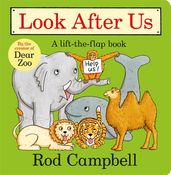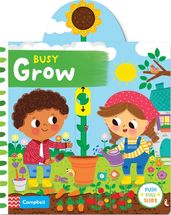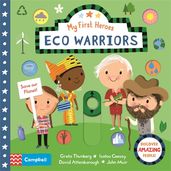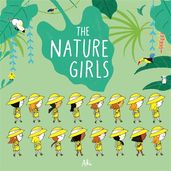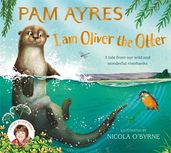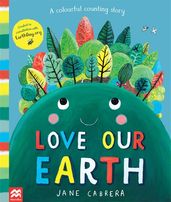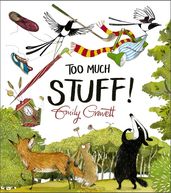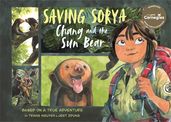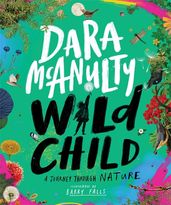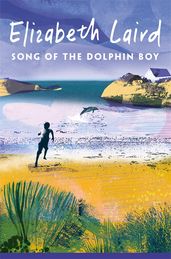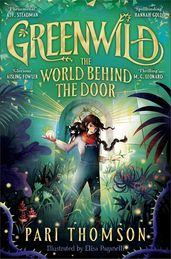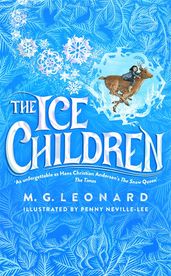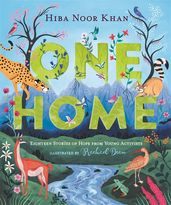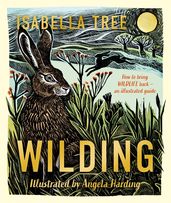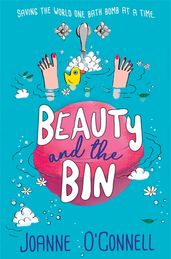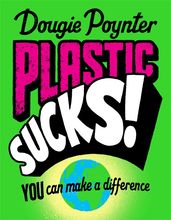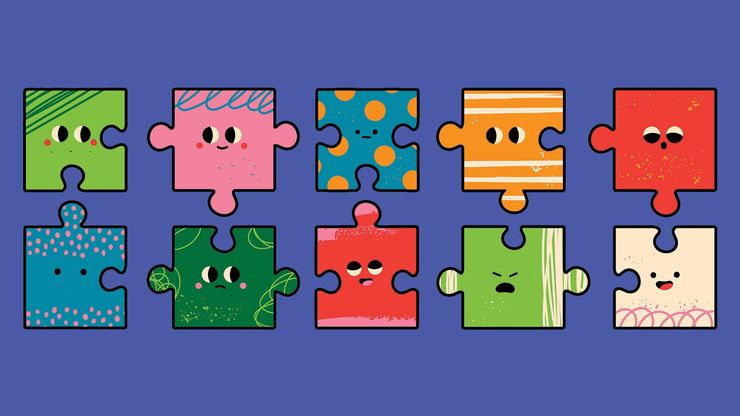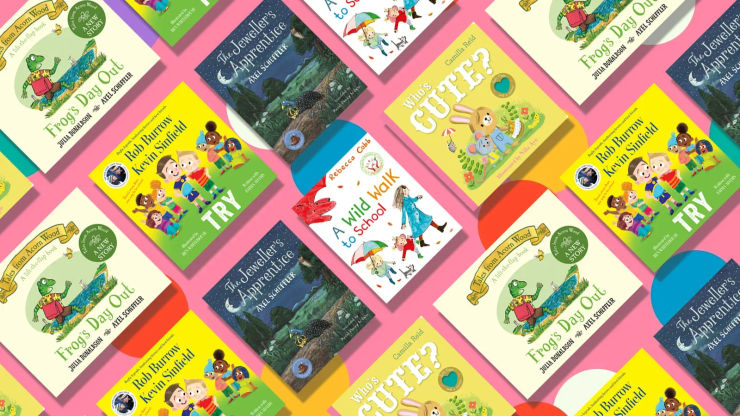How to talk to children about climate change (and books that can help)
Greenwild author Pari Thomson offers advice on how to talk to children about the climate crisis, followed by our choice of conversation-starting children's books about the environment.

With the disastrous effects of climate change regularly hitting the headlines, children are likely to have more questions and worries about the environment and our impact on it than ever before. Pari Thomson, author of the award-winning Greenwild series of eco-thrillers, offers advice on how to navigate this potentially difficult topic with children, followed by our recommendations of books that explore and celebrate the natural world, and ways we can help keep it safe.
The climate crisis often feels overwhelming – and it can be challenging to know how to discuss it with children.
The United Nations defines climate change as ‘long-term shifts in temperatures and weather patterns,’ mainly caused by the burning of fossil fuels like coal, oil and gas, which generate greenhouse gas emissions. These emissions trap the sun’s heat inside the Earth’s atmosphere, causing the planet to heat up.
Climate scientists have shown that humans are responsible for almost all global warming over the last 200 years – and the consequences feel terrifying. Forest fires, flooding, droughts, melting ice caps and the loss of millions of the astonishing plant and animal species that light up our world with their precise, irrecoverable beauty.
In the face of all this, fear is a rational response. But for a child, silence is often the scariest thing of all. It’s important to talk to children about climate change – and even more important to listen to their worries, questions, and concerns.
‘It’s important to talk to children about climate change – and even more important to listen to their worries, questions, and concerns.’
This opens up a space for genuine conversation, a place where you can remind children that they aren’t responsible for causing the climate crisis – and that the responsibility for fixing it does not fall on them. You might not have all the answers, but what you can do is reassure them that they are safe – and that while there is cause for worry, there is greater cause for hope.
There are so many resourceful and inspiring people who are bending all their wit and ingenuity and bravery towards fighting the climate crisis. There are people fighting deforestation by planting trees, and fighting greenhouse gas emissions by developing renewable resources like solar and wind power. There are people battling to protect our oceans, and to create alternatives to plastic.
If children want to get involved, there are lots of things they can do too, from recycling at home to taking public transport and eating less meat. The most important thing they can do, though, is to keep talking – to their friends, families, teachers . . . and to their governments. Write letters; join marches; put pressure on local MPs. Don’t give up!
And of course, one last thing. We must all keep talking about the sheer, wild wonder of the world around us. Slow down and notice the beauty of a wildflower in a pavement crack, or a brand-new leaf unfurling in spring. Walk under trees and stare into rockpools. Shout about the miraculous, overwhelming beauty of the world – because that is what we have to protect, and that is where our greatest hope lies.
Children’s books about the environment for babies and toddlers
Look After Us
by Rod Campbell
Toddlers will love lifting the flaps to meet elephants, tigers, orangutans and more in this board book about endangered animals. With bright, bold artwork and a positive message about how to look after our world and the animals in it, this is the perfect introduction to conservation for young children.
Busy Grow
by Campbell Books
Green-fingered toddlers will love pushing, pulling and sliding the tabs to make the flowers bloom in Busy Grow. This colourful board book has gentle rhyming text and bright, colourful illustrations to spark little ones’ interest in discovering how things grow.
Busy Recycle
by Campbell Books
Help to clean up the Earth by pushing, pulling and sliding the tabs in Busy Recycle. Children will love helping to recycle waste, reusing materials to make a rocket and seeing the recycling truck do its work. This is one of the best children’s books about the environment for starting to educate little ones about the importance of recycling.
Eco Warriors
by Nila Aye
Push, pull and slide the tabs to discover the environmental heroes who are changing our world for the better. Full of fun facts and bright illustrations, this board book will teach toddlers all about Greta Thunberg, David Attenborough and others.
The Nature Girls
by AKI Delphine Mach
Full of rhymes, stunning illustrations and fun nature facts, this is an adorable picture book from author and illustrator Aki. The Nature Girls are packing their bags and going on an adventure, exploring natural habitats around the world. There’s so much to discover, from swimming in the sea to exploring the desert, and they’re ready for anything nature throws at them!
Children’s books about the environment for ages 3 – 5
A Song of Gladness
by Michael Morpurgo
Former Children's Laureate Sir Michael Morpurgo comes together with twice CILIP Kate Greenaway award-winning Emily Gravett to create this beautiful book that celebrates our connection with nature and the urgent need for us to care for the planet and its creatures. From a blackbird in a British back garden to leopards in the savanna and hibernating bears, there's something to appeal to every child.
I am Oliver the Otter
by Pam Ayres
It’s never too early to start teaching children about how precious our natural world is, and Pam Ayres’s delightful rhyming picture book will help you do just that. Telling the story of Oliver the otter, whose life changes forever when he meets Ottilie in the green rushes of his waterway home, this heartwarming tale of one of our nation’s best-loved mammals would make a perfect gift for young animal lovers.
Love Our Earth
by Jane Cabrera
Young explorers will love this playful picture book all about caring for the Earth. Part picture book, part board book (so perfect for little hands), there's lots to spot and count on this colourful journey across mountains, rivers, jungles and oceans. Plus, don’t miss the fold-out surprise at the end!
Eco Hero In Training
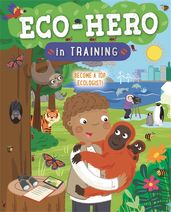
Discover the life and career of an ecologist in this colourful book full of fun and practical activities that support learning. Eco Hero in Training teaches children all about habitats, animals, plants and how we can all be greener.
Tidy
by Emily Gravett
Little ones will love this funny rhyming woodland tale about the perils of being too tidy. Pete the badger likes everything to be neat and tidy at all times, but what starts as the collecting of one fallen leaf escalates and ends with the complete destruction of the forest. Will Pete realise the error of his ways and set things right?
Too Much Stuff
by Emily Gravett
This funny woodland story with an environmental message is a perfect picture book for young eco-warriors. Meg and Ash are a pair of magpies who are building a nest for their eggs. They start by using the usual building materials – mud, sticks and grass – but they are soon convinced that they don’t have enough stuff. They add more things – from cuckoo clocks to mops and socks, a pram and even a car – to their ever-growing pile, until the inevitable happens and there’s a big crash!
Children’s books about the environment for ages 6 – 8
Saving Sorya: Chang and the Sun Bear
by Nguyen Thi Thu Trang
An inspiring graphic novel thriller, written by scientist and environmental activist Trang Nguyen. When Chang finds there is a bear farm near where she lives in Vietnam, she decides to save all the animals she can, by learning to be a conservationist. She becomes a volunteer at a rescue centre, then decides to release Sorya – a sun bear who is also her best friend – back into the wild . . .
Wild Child
by Dara McAnulty
Join brilliant young naturalist Dara McAnulty on a nature walk and experience the joy of connecting with the natural world on your multi sensory journey.
This beautiful gift book is divided into five sections: looking out of the window, venturing out into the garden, walking in the woods, investigating heathland and wandering on the river bank. Each introduces young readers to the habitat and fantastic facts about the native wildlife there, and also contains a discovery section which takes a closer look natural phenomenon such as metamorphoses and migration.
Be the Change
by Liz Brownlee
From National Poetry Day Ambassadors Liz Brownlee, Matt Goodfellow and Roger Stevens comes an incredible anthology of poetry identifying ways we can Be the Change.
These positive and upbeat poems will explore sustainability and the positive efforts being made to protect the planet and are perfect for starting conversations about looking after each other and our environment.
Song of the Dolphin Boy
by Elizabeth Laird
This moving adventure about the impact of plastic pollution on our seas is must-read modern classic. Finn has always felt different from the other children in his tiny fishing village, Stromhead, until the day he swims with dolphins off his local beach, and feels completely at home. But his new friends are in danger of being injured by the rubbish that floats out into the water – and now a supermarket is going to release thousands of balloons that could drift out to sea and cause even more damage. Desperate to help the dolphins, Finn goes to the Lighthouse Crew, a group of kids who have always left him out. Will they be able to set aside their differences to save the dolphins? And what will Finn discover about his past along the way?
Children’s books about the environment for ages 9 – 12
Greenwild: The World Behind The Door
by Pari Thomson
An extraordinary fantasy book with an environmental twist and a mystery at its heart. Daisy Thistledown has escaped from boarding school and is trying to find her missing mother. Her search takes her across London and through a hidden doorway into a world bursting with plants and magic: the Greenwild. But it soon becomes clear that all is not well. Can Daisy revive the Greenwild, save our world, and solve the mystery of her mother's disappearance? A botanical genius, a boy who can talk to animals and cat with an attitude are on-hand to help.
The Ice Children
by M. G. Leonard
The Ice Children is an exciting, modern, magical mystery adventure inspired by classic fairy tale 'The Snow Queen', with a powerful environmental message. On a cold December dawn, young Finn Albedo is inexplicably frozen at a park, yet he remains alive. His situation appears to be tied to a vanished enchanting book. Finn's sister, Bianca, grows alarmed as more 'Ice Children' cases come to light. With time running out, Bianca navigates a dangerous winter world, which deceives with its beauty. Can Bianca unravel the truth and rescue the Ice Children, including her brother, from their freezing fate?
Stitched Up
by Joanne O'Connell
Cassie has a passion for fashion so when the opportunity to redesign her school uniform comes up Cassie is thrilled. The only problem? She’s stuck between eco-conscious Fern and label-loving Azra. As the competition heats up, Cassie joins The KnitWits – a local knitting group that immediately makes Cassie feel at home, especially once she sees that it’s secretly attended by the coolest girl at school. As Cassie’s skills grow, she has to learn to balance Azra’s obsession with trends with her own love of sustainable fashion. But will the pressure cause the ultimate bestie break-up?
One Home
by Hiba Noor Khan
Join Hiba Noor Khan as she takes you on a glorious journey across the globe to meet eighteen inspiring young activists who are taking a stand against climate change, and find out how you can help protect our beautiful Earth. The book includes a toolkit for young nature-lovers, with simple, empowering activities that we can all do from home to help protect our environment.
Wilding: How to Bring Wildlife Back - The NEW Illustrated Guide
by Isabella Tree
This beautiful gift book, illustrated throughout with lino prints and watercolours, is the story of the Knepp Estate in West Sussex – home to some of the rarest and most beautiful creatures in the UK – and a guide to bringing wildlife back where you live. Perfect for budding naturalists, it includes timelines, an in-depth look at rewilding and spotlight features on native animals including butterflies, bats, owls and beetles, alongside accessible in-garden activities to 're-wild' your own spaces.
Beauty and the Bin
by Joanne O'Connell
Laurie loves her family and helping them to make the world a better place, one home-made bath bomb at a time. But sometimes she just wants to be a normal kid. So when her school hosts a competition to find the next ‘business with a difference’ she teams up with the most popular girl at school to sell her home-made beauty products. Can Laurie find success without losing her true self? This children’s book with an environmental message is a fresh and funny debut about friends, family, school and being a young eco-warrior.
Plastic Sucks!
by Dougie Poynter
How can we all help save the planet? Dougie Poynter, musician and environmental activist, is here to show kids how they can help in the mission to cut-out single-use plastic. Full of top tips and infographics, Plastic Sucks! explains the history of plastic, draws on the experience of key campaigners and eco-entrepreneurs and includes easy steps we can all take to make small changes and become champions for the planet.
